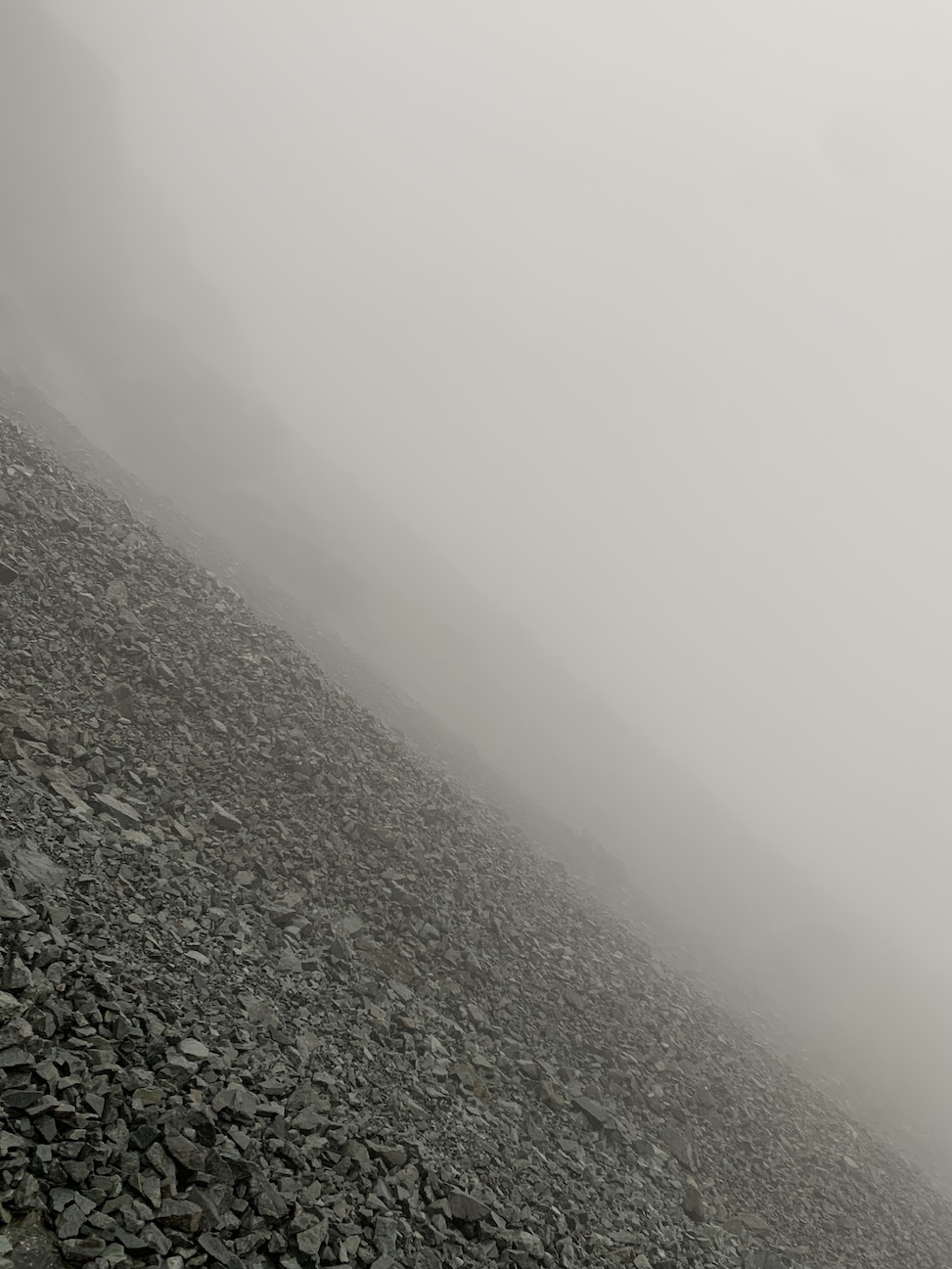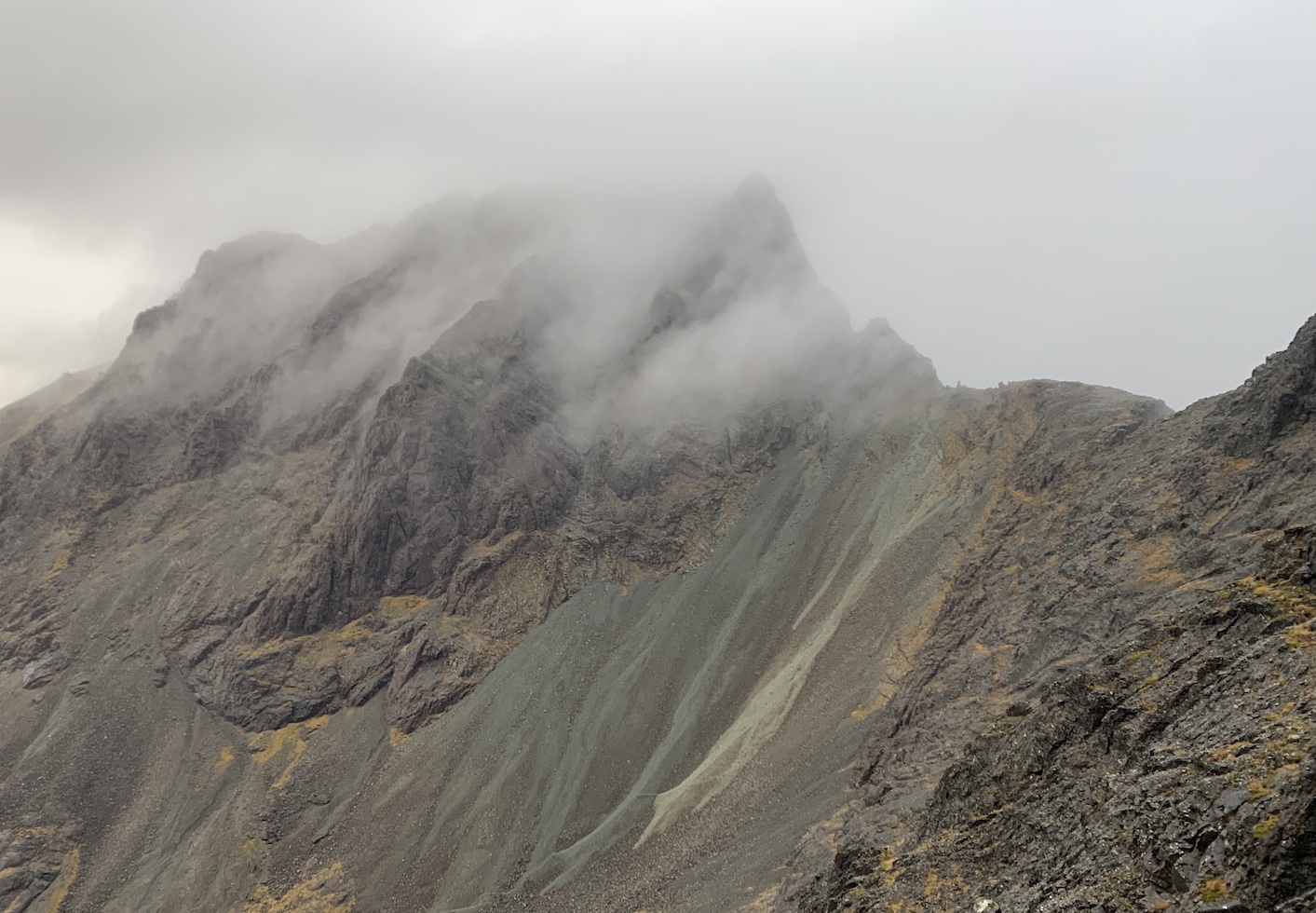The Great Stone Chute to Sgúrr Alasdair
There had been another London interlude, 3 months of despair on the Central Line, so I quit and went to Edinburgh.
It was pure elation to cross the border: bleak weather, Wheaton’s friend Forsyth up for COP26 with a pair of Chacos and a bag of apples he found on the street, Wheaton himself nursing a blown eardrum in his Morningside bedroom.
We rented a car and took the long way up to Skye, passing through Glencoe. A storm was kicking up, so we called off the camping at Portree and raced up a narrow farm road instead, hugging the northwest coast toward Rubha Hunish where the OS map promised a bothy. As the sun set, we left the car by the road and walked out onto the peninsula.
An Israeli couple already inside gave us some cheap whisky and told us about their art. The woman snored while the man laughed in his sleep. We woke to an ethereal sunrise – all the Scottish purples shining out of heath-bound puddles.
Morning was spent hiking around the Old Man of Storr.
Then up to the Quiraing where we passed a miserable 13-hour night beneath the black slabs, which groaned under the volume of water flowing down from the plateau above.
We dried off in a diner the next morning before striking out for the Black Cuillin. The approach we’d chosen started where Glen Brittle hit the coast, up through sloping moorland and past scattered cairns.
It was mid afternoon by the time we reached Coire Lagan, a cirque formed by the Cuillin Ridge with a glassy green lochan in its center.
Over the water was something I’d wanted to see for years: the Great Stone Chute, a thousand foot fan of scree that steepens and tapers into a narrow canyon. A jagged streak of pale sediment marks the popular route, which eventually hits a col before doglegging to the tallest peak on Skye.
The slope neared 45 degrees at points. With every step, you’d sink knee deep into scree or, worse, dislodge a pocket of stones, which tumbled down and picked up speed until they hit the floor of the corrie below. There was a constant howl at our backs that echoed across the walls of the chute and carried a thick fog up around us.

Halfway up, a troupe of European climbers passed us on their descent. They had white helmets, two long poles each, beautiful gear—but one of them kept eating it on the scree, sliding out for 30 feet at a time and sending waves of the stuff down onto his companions. Forsyth (no backpack or poles, feet bloodied in his sandals) called across the chute with pure Midwestern earnestness: “It helps to place your feet more delicately!”
After the bend, a face of mossy basalt along the left wall was a welcome change.
Then the chute tightened to 30 feet and everything was lost in the milkiness of the general illumination. Forsyth was gone but I could hear rocks shifting somewhere below.
The saddle appeared suddenly, splitting open the sky between Sgùrr MhicChoinnich and Sgùrr Alasdair. I will always remember the half hour that followed. As soon as I crested, everything was silent—the fog rolling over the col and dropping into the abyss beyond.
Forsyth and I scrambled to a shelf overlooking Loch Coir' a' Ghrunnda, Soay, and Rùm. There was a sickly yellow light at world’s end.
The final spine was slick and narrow and fully exposed, with wind so strong that we had to crawl. We only lasted a few minutes on the peak, staring down into 992 meters of endless grey.
Then it was back down the chute—the fog moving slow and heavy over the mithril streaks across the corrie.

I reached the car before Forsyth and swam in Glen Brittle, which gapes out into the Outer Hebrides. We hit Portree after dark, ate a huge meal in a warm pub, and slept in a parking lot until dawn.